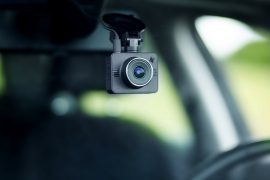As the DVSA gears up to release the latest driving test statistics for April 2023 to March 2024, personalised number plate supplier Regtransfers spoke with Sophie Stuchfield, an instructor with fifteen years experience in teaching students and providing driving test tips on social media under the handle @TheOnlineDrivingInstructor. Together, they address the top 10 faults seen in UK driving tests over the past 10 years.
1. Observation at Junctions
Sophie highlights the importance of keen observation at junctions – the number one fault seen over the past decade of tests. “If you don’t pay close attention to road markings or road signs, you may be completely unaware that you are approaching a junction”, she states.
What might this lead to? “In this instance,” comments Sophie, “an examiner may have to either verbally warn you or apply the dual control brake pedal to slow down/stop”. She also stresses the importance of double checking when emerging from a junction: “only looking once is never enough, you must double check when emerging to make sure the road is safe.”
2. Mirrors – (change direction)
Checking mirrors before signalling, changing direction, or changing speed is something all learner drivers need to become comfortable with, and the “Mirror-Signal-Manoeuvre” routine should be second nature for those getting into a car. Faults that can occur here include – but aren’t limited to – late or no use of exterior mirrors before changing direction.
On this, Sophie reinforces “this mainly applies to your wing mirrors when lane changing and moving around hazards. Before you move right, check your right wing mirror. Before you move left, check your left wing mirror. It’s something which seems very simple and obvious, but it’s amazing how many people forget this.”
She attributes this common oversight to nerves, explaining that learners on tests are often overthinking, and worrying how they would be marked rather than dealing with a hazard naturally.
3. Junctions (turning right)
When it comes to turning right at junctions, Sophie advises, “You must not cut the corner when turning into a road on your right. Even if the junction is completely clear of other road users, you must use correct positioning at all times.”
She further explains the importance of learner drivers taking up proper positioning: “Approaching the turn, if there is no oncoming traffic, drivers will often drift to the wrong side of the road before turning. It’s really important to stay on your side of the road until you reach your point of turn”
4. Control (steering)
Sophie notes that a lot of the errors made by learners during their test stem from nerves. “When we’re nervous, our bodies tend to stiffen up. Combine this with the fact most drivers incorrectly believe that we are not allowed to cross arms, and suddenly steering becomes stiff – which leads to understeering with an uncomfortable and ineffective shuffling of hands on the wheel.”
It may surprise some to learn that crossing your arms on the steering wheel is not a “fail” condition of the test, but Sophie explains that she, and many other instructors, are advocates of flexibility in steering methods, providing they are safe: “So long as you are in control of the car, it’s absolutely fine to cross your arm. Sometimes, it’s even necessary to perform lots of steering in a quick moment.”
5. Response to signals (traffic lights)
Sophie offers practical advice for responding to traffic signals: “Whilst waiting at a red light, make sure you’re paying attention, so you don’t miss the change to a green light. Again, this seems extremely simple advice, but too often drivers allow their minds to wander, and try to predict how the examiner might be marking their drive. Before you know it, the vehicle behind is sounding their horn, the light has changed green and you’re left worrying that you messed up”.
She also emphasises the importance of anticipation, “You must not cross the stop line on an amber light. If you are approaching traffic lights which have been green for some time, it’s always safer to assume that it’s likely to change to amber and then red.”
6. Move off (safely)
During driving tests, candidates will be asked to stop on the left on at least four occasions. Then, they will be evaluated on their ability to move off safely from the side of the road – including the ability to conduct all-around observation, not inconveniencing other road users, and giving adequate clearance to parked vehicles.
Advising on this area, Sophie remarks: “take your time to make sure you have the correct gear selected, the handbrake is down and you complete the six point check to ensure your surroundings are safe before moving.” She insists on the importance of not rushing and ensuring safety: “You must not cause any other cars to slow down. Wait until you have a safe gap!”
7. Positioning (normal driving)
For normal driving positioning, Sophie’s guidance is straightforward: “Do not use the right hand lane unless you are overtaking or turning right. If you’re an international driver who is used to driving on the right, make sure you get enough practice driving on the left so it feels more natural and normal to you.”
8. Move off (control)
Similar to moving off safely, control during moving off includes thorough observation, joining the new road without affecting other road users, and ensuring sufficient clearance to parked vehicles.
Regarding control during moving off, Sophie reiterates the impact of nerves and the need for calmness, “As said above, when moving off it’s important to take your time and make sure you have the correct gear selected. If you stall while driving a manual, take a moment to catch your breath(!) before getting started again; stalling isn’t an automatic fail”.
9. Response to Signals (Road Markings)
During a test, the examiner will check that the candidate responds appropriately to all lines and lane markings, such as stop and give way lines, box junctions, and traffic calming measures. Faults include driving in bus lanes, not stopping at stop markings, and stopping in “keep clear” zones.
“Always read the road”, comments Sophie. “This means keeping an eye out in advance for any arrows which will help you to select the correct lane for your direction at all times.” She also advises that if road markings (or signs) are poor, an examiner will direct test candidates. “Remember, you can always ask for clarification if you need it, provided you ask in plenty of time.”
10. Reverse Park (Control)
During parking, the candidate must select a suitable space, position the vehicle correctly, prepare the vehicle for reversing, and observe the surroundings before and during the manoeuvre. The parking should be executed with control, precision, and awareness of the surroundings.
“Take your time when parking”, comments Sophie. “You can make adjustments, dip door mirrors, open windows to see and even get out and check that your position is correct.”
Conclusion
Despite the above list, Sophie recognises two more reasons that a learner driver might fail their test:
“In my opinion, people fail their test due to one of two reasons, either due to nerves or taking their test too soon. If you’re learning to drive, it’s important to be relaxed, focused and comfortable during your driving test – just as you would be if you were driving on any other day. As for the second point, don’t be in a rush to get your licence. Take your time with lessons and make sure you and your instructor both feel you’re ready and able to pass.”
As we await the latest DVSA statistics, mastering certain key skills remains a key focus for aspiring drivers. As many will know, passing your driving test takes preparation and practice, combining careful observation, precise control, and adherence to road rules.





